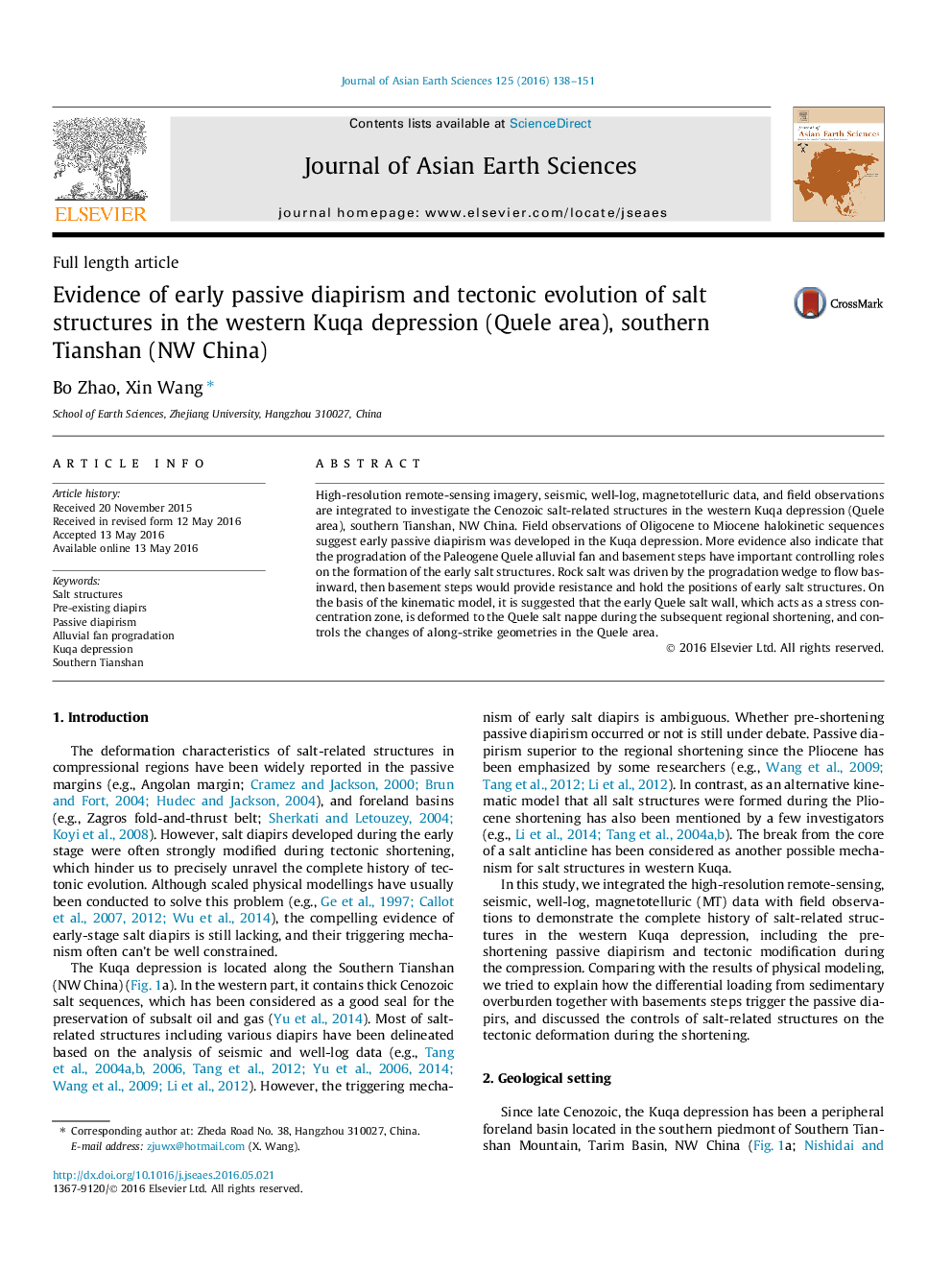| Article ID | Journal | Published Year | Pages | File Type |
|---|---|---|---|---|
| 4730029 | Journal of Asian Earth Sciences | 2016 | 14 Pages |
•We investigated the tectonic evolution of salt structures in western Kuqa depression.•Evidence and triggering mechanism of early passive diapirism are presented.•Early-stage salt geometry controls the tectonic deformation under shortening.
High-resolution remote-sensing imagery, seismic, well-log, magnetotelluric data, and field observations are integrated to investigate the Cenozoic salt-related structures in the western Kuqa depression (Quele area), southern Tianshan, NW China. Field observations of Oligocene to Miocene halokinetic sequences suggest early passive diapirism was developed in the Kuqa depression. More evidence also indicate that the progradation of the Paleogene Quele alluvial fan and basement steps have important controlling roles on the formation of the early salt structures. Rock salt was driven by the progradation wedge to flow basinward, then basement steps would provide resistance and hold the positions of early salt structures. On the basis of the kinematic model, it is suggested that the early Quele salt wall, which acts as a stress concentration zone, is deformed to the Quele salt nappe during the subsequent regional shortening, and controls the changes of along-strike geometries in the Quele area.
Graphical abstractFigure optionsDownload full-size imageDownload as PowerPoint slide
